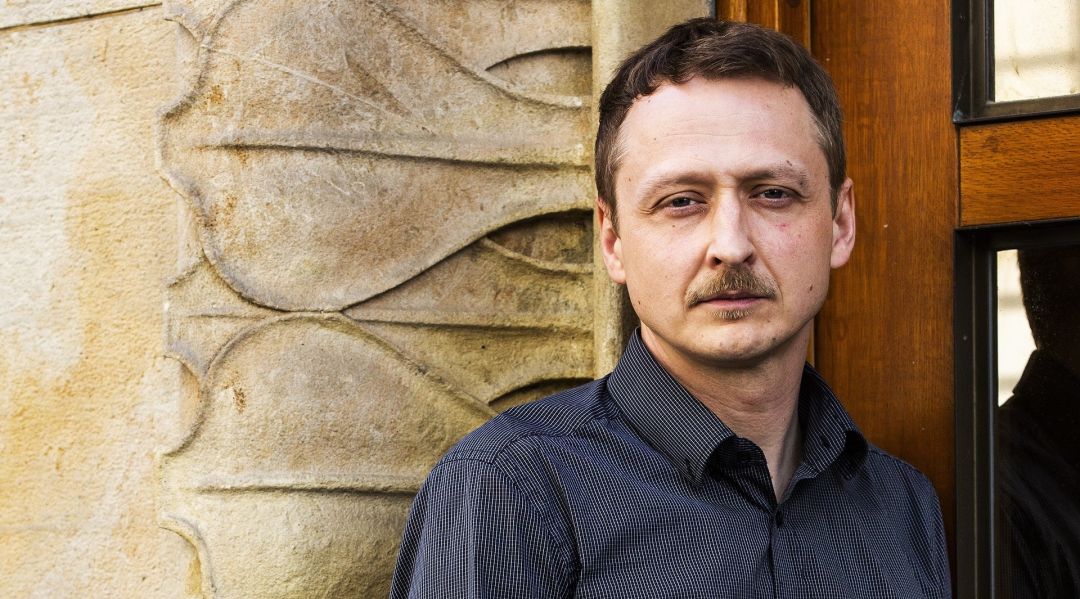Spotlight: Couple by Couple
The two curators of the Spotlight: Slovensko series, Bernd Buder and Rastislav Steranka, each juxtapose two Slovak films that deal in different ways with themes such as the Holocaust, life in an urban microcosm, or the existential struggle for survival in everyday life. The films were made several decades apart. We had the opportunity to ask Rastislav Steranka some questions.
What new perspectives does this unusual juxtaposition offer the viewer?
In 1921 a small film crew of American Slovaks made a silent film in Slovakia which is now considered the first Slovak feature length fiction film (Jánošík, dir. Jaroslav Siakeľ). The whole idea of how to curate the Spotlight: Slovensko retrospective stemmed from thinking about how to present Slovak cinema in the year 2021 without resorting to the obvious – either screening Jánošík or any of the canonical works of Slovak classic cinema (the ones which have been the most visible outside of its country of origin). There’s more to Slovak classic cinema than The Sun in the Net by Štefan Uher aka „John the Baptist“ of the Czechoslovak New Wave or films by Juraj Jakubisko and Dušan Hanák (our national treasures, that goes without any doubts). Bernd Buder and me, we were very much tempted to look at the history of Slovak cinema in spatial rather than temporal terms and this way, perhaps, to outline new maps in our cinema history. I wouldn’t necessarily call the pairings a juxtaposition, but rather employing the fluid process of programming with an aim to create connections between films, and thus establishing a network with multiple entrance points, junctions and nodes. Pairing them without caring about chronology, genre or duration and thus provide the audience with selected themes which Slovak filmmakers tackled in the past but are still relevant. The goal was to show how Slovak filmmakers dealt with the same issues and topics more than half a century ago and how they deal with them now.
For decades, Slovak film production was the production of a common country – ČSSR, later ČSFR. On January 1, 1993, Czechoslovakia became two separate states: Czech Republic and Slovakia. How has the cultural identity of Slovakia been preserved despite all historical, social developments in the films produced together until 1993. What is special about Slovak film, what distinguishes it from Czech film?
Slovak cinema is relatively young. Koliba Film Studios in Bratislava were established and went into operation in 1953. It’s important to state that Koliba, from its very beginnings until (almost) its bitter end, was state owned and controlled all the while the state itself was run by the Communist Party. Barrandov, the first film studios in Czechoslovakia (now Czech Republic) opened already in 1931, turning Prague into one of the leading production facilities on the European continent. As you can see there were different starting points for the two national cinemas (although they were nationalized as common Czechoslovak cinema after WWII). Some of first wave of Slovak filmmakers (Stanislav Barabáš, Eduard Grečner, Peter Solan, Štefan Uher) who came to Koliba in mid 1950s had studied at FAMU in Prague. There has always been very strong connection between the two national cinemas. It was Czech filmmakers who helped their Slovak colleagues build technical and creative background for the film production. Czech directors used to make films in Slovakia and vice versa. Even nowadays almost all the Slovak films are made in coproduction with Czech Republic and vice versa. To have a look at films „countrywise“, films made at Barrandov are now Czech and ones made at Koliba are Slovak. Slovak cinema doesn’t have such a long and fruitful tradition as the Czech one, we don’t have such instantly internationally recognizable names as Věra Chytilová, Miloš Forman or Jiří Menzel. Czech cinema has also produced genre films (comedies, westerns, sci-fi, horror films) which are missing in Slovak cinema (except for rare attempts). Czechs have their own brand of specific cynical so called Czech humour, which has also seeped into their films. Slovaks are, I dare to say, more serious and so is our cinema in reflecting social, political and cultural issues (unfortunately, many times with a strong ideological bias, depending on the era).
INFO Slovak Film Institute
The Slovak Film Institute (SFI, est. in 1963) is the only national film institution in Slovakia, comprising of National Film Archive and National Cinematographic Centre, which serves a film centre promoting both contemporary and classic Slovak cinema. SFI handles producers' rights to Slovak films produced in Slovakia until 1991, and is a member of FIAF, EFP, as well as the seat of Creative Europe Desk Slovakia.
BIO Rastislav Steranka
Director of the National Cinematographic Centre at the Slovak Film Institute. One of the three curators at Slovak Film Institute cinematheque - Filmotéka. He has been a guest lecturer at the Film Cabinet (a film education programme of the Slovak Film Institute), has written and translated texts on classic and contemporary cinema for various magazines, publications and textbooks.
Rastislav Steranka interview
